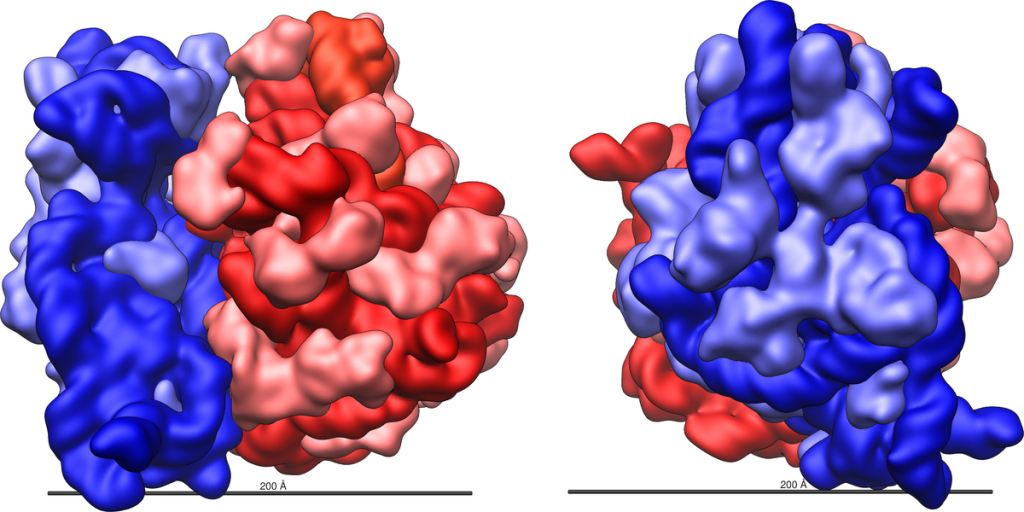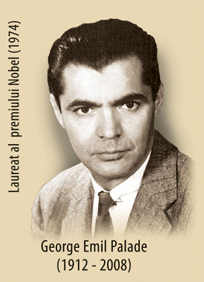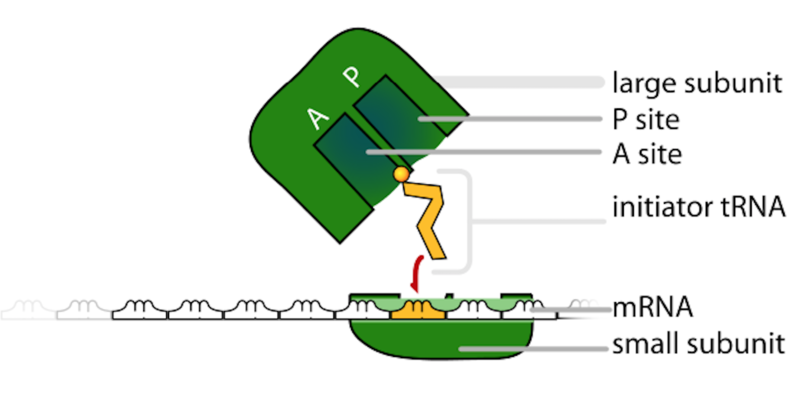Ribosomes are giant macromolecule in the cytoplasm which are responsible for protein synthesis. They are not bound by a membrane. They have a length of 200-340 A, a diameter of 170-240 A and are made up of proteins and RNA. They are popularly called “protein factories”.
Two unequal subunits comprise a ribosome. The smaller oblate-ellipsoid-shaped subunit fits over the larger dome-shaped subunit. An optimal concentration of Mg^2+ is essential for binding these two subunits.

Index
History
Robinson and Brown were the first to observe Ribosomes in plant cells in 1953. Ribosomes were first observed in animal cells by a Romanian-American cell biologist George Emile Palade in 1955.

The Noble prize for Physiology or Medicine was awarded to Palade, Albert Claude, and Christian de Duve for discovering Ribosomes in 1974
Composition and Types of Ribosomes (Based on Size)
The size of a ribosome is determined by its sedimentation coefficient in a centrifuge and is measured in the Svedberg unit called S (\(1 S = 1 \cdot 10^{-13} sec)\). Chemically, proteins and rRNA (=ribosomal RNA) are two parts that make up the Ribosome.
The 80 S ribosomes only occur in eukaryotes, while the 70 S ribosomes occur both in prokaryotes and eukaryotes.
- 80 S Ribosome:
- Small Subunit (40 S): 33 Proteins + 18 S rRNA
- Large Subunit (60 S): 40 Proteins + 28 S rRNA + 5.8 S rRNA
- 70 S Ribosome:
- Small Subunit (30 S): 21 Proteins + 16 S rRNA
- Large Subunit (50 S): 34 Proteins + 5 S rRNA + 23 S rRNA
Occurrence and Origin of Ribosomes
Ribosomes occur in the cytoplasm of all living cells, with the exception of mammalian erythrocytes. They also occur in some organelles- namely mitochondria and plastids.
Structure of Ribosome
As mentioned before, these macromolecules are made out of RNA and proteins. Then each ribosome consists of two separate RNA-protein complexes, known as the
1. Small subunit
2. Large subunit.
The large subunit sits on top of the small subunit, with an RNA template sandwiched between the two.

A ribosome has four specific sites for attachments
- mRNA binding site.
- A or Aminoacyl site for binding of amino acid carrying tRNA.
- P or Peptidyl site for carrying the tRNA with growing the polypeptide chain.
- E or Exit site to allow the freed tRNA to leave.
Functions of Ribosomes
- Protein Factories: Ribosomes are the site for polypeptide or protein synthesis.
- Ribosomes provide enzymes (like Peptidyl transferase) for the condensing amino acids to form polypeptides.
- The larger subunit’s cleft encloses the newly synthesized polypeptide, which protects it from the enzymes in the cytoplasm.
Related Topics
Questions
- What is a Ribosome?
Ribosomes are giant macromolecule in the cytoplasm which is responsible for protein. They are not bound by a membrane. They have a length of 200-340 A and diameter of 170-240 A and are made up of proteins and RNA. They are popularly called “protein factories.”
- Where is the Ribosome located?
The ribosome occurs in the cytoplasm of all living cells except mammalian erythrocytes. They also occur in some organelles- namely mitochondria and plastids.
FAQs
Robinson and Brown were the first to observe Ribosomes in plant cells in 1953. They were first observed in animal cells by a Romanian-American cell biologist George Emile Palade in 1955.
Chemically, proteins and rRNA (=ribosomal RNA) are two parts that make up the Ribosome.
The 80 S ribosome has a subunit of 60 S and a 40 S found in eukaryotic cells.
The 70 S ribosome has subunits comprising a 50 S and a 30 S.
